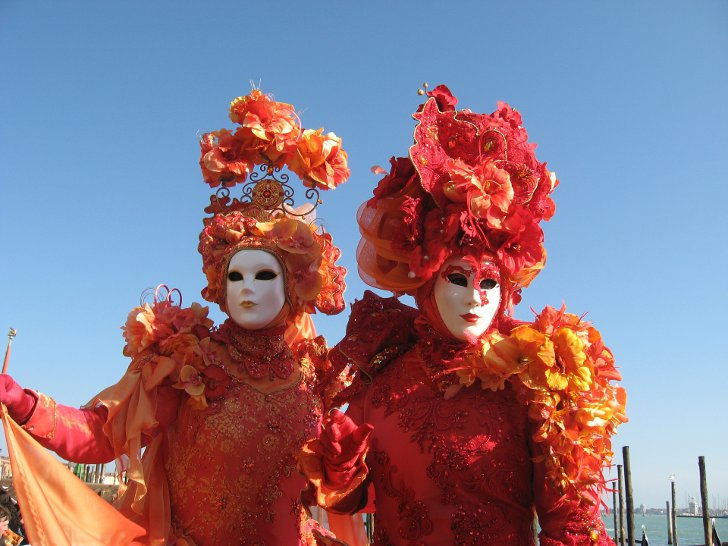The Carnival of Venice has a remarkably long history. It most likely originated from the victory of the Republic of Venice against Ulrich II von Treven, the Patriarch of Aquilea in 1162. The people of Venice gathered in San Marco Square and started to dance and sing to honor this victory. Apparently, the Carnival started in the early 12th century and become official in the Renaissance.
The Carnival of Venice was very famous during the 17th and 18th centuries, maintaining Venice’s image in the world. It was outlawed in 1797 after Venice became Austrian. The festival reappeared for short periods in the 19th century. It officially returned in 1979 when the Italian government decided to promote the culture and history of Venice.
The wearing of masks has always been an important feature of the Carnival of Venice and at some point even of the life in Venice in general. Today, there are several distinct mask styles worn during the Carnival, some even have identifying names. The most popular masks include the bauta (a grotesque mask associated with high society), Colombina (a heavily decorated half-mask), the Plague Doctor (Medico della peste), the moretta/servetta muta, the volto/lavra, Paltalone, Arlecchino, Zanni. Zanni, Arlecchino, Pantalone and Colombina are character types of Commedia dell’arte, a form of Italian theater.
The Carnival of Venice typically starts in late January or early February and runs through Shrove Tuesday, also known as Mardi Gras, the day before Ash Wednesday. The end of the Carnival marks the beginning of Lent in Western Christianity. During the Carnival, the streets of Venice are flooded with masked characters. A lot of masks are very elaborate. They can be made of Venetian glass, porcelain or leather and decorated with feathers, gems and gold leaf.
The festival opens with a spectacular event known as “Festa veneziana”. It features dance and music performances followed by a water parade along the Calan Grande.
One of the Carnival’s main attractions is the traditional Festa delle Marie. In medieval Venice, twelve beautiful girls from the poorest families were given clothes, jewelry and dowry so that they could marry. The ceremony happened every year. Today’s Festa delle Marie is an homage to this tradition and an opportunity to admire the traditional period costume. Twelve young women are selected every year to participate in the walking parade, accompanied by local historical and carnival groups.
The flight of the Angel is another noteworthy tradition of the Carnival of Venice. Thousands of people gather at Piazza San Marco waiting for the Angel of Carnival to fly down from the bell tower. The role of the Angel is typically played by the winner of the previous year’s Festa delle Marie contest. The event is an homage to the old tradition where an unknown guest of the Republic of Venice flew along a rope from the bell tower and greeted the Doge.
The Carnival culminates on Fat Tuesday with a truly spectacular parade featuring masked characters and actors in beautiful costumes. Twelve Marias return to the Carnival and this year’s winning Maria is crowned during a special ceremony. A flag depicting a lion (Leone di San Marco, the symbol of Venice) is raised on the bell tower, and everyone salutes.
In 2021, the event was held online due to the coronavirus pandemic.





